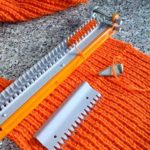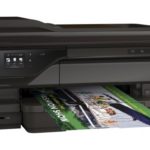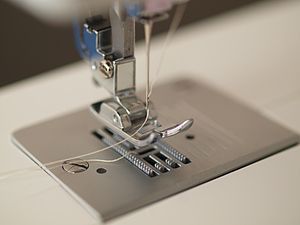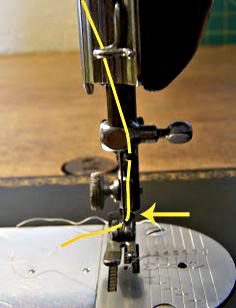Types of seams on a sewing machine
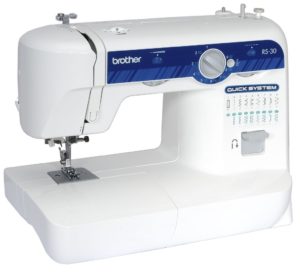 It is impossible to live without a sewing machine on a household. At least the most primitive one. Despite the fact that now it is rare for people to sew clothes for themselves and their loved ones. All the same, women hem something, narrow it, alter it, arrange it, process unraveled edges, create textiles for home decoration, and make toys.
It is impossible to live without a sewing machine on a household. At least the most primitive one. Despite the fact that now it is rare for people to sew clothes for themselves and their loved ones. All the same, women hem something, narrow it, alter it, arrange it, process unraveled edges, create textiles for home decoration, and make toys.
- change zippers on trousers and jeans;
- sew buttonholes on jackets, coats and trousers;
- apply patches to knees and elbows;
- process the blossoming and “crumbled” edges.
ATTENTION. There are special paws for these and similar operations. The most commonly used is the overcasting foot (it replaces the overlocker). For sewing buttonholes and sewing in zippers.
The content of the article
Types of seams on a sewing machine
- connecting;
- finishing;
- marginal.
CONNECTING
Taking into account the thickness of the fabric, determine the stitch size. Simple stitches are used especially often. The thicker the material, the longer the stitch length. There is no other way, the needle will break. Or the sewing machine will constantly jam. The thread will begin to wrap around the needle. You'll have to rip it apart. Pull out tangled threads. And refuel your assistant again.
The stitch seam is used to connect:
- side and shoulder sections of jackets, shirts, blouses, etc.;
- sleeves and main part of the model;
- cut parts of dresses, raincoats and coats;
- opening and sleeves.
Fold it right sides together as usual and sew a line. Ironing “on edge” to maintain the desired position of the cuts is done after the steamer. You can also iron one way or the other. This type of seam is performed both with and without seating one of the edges being joined.
Types of overlay seams:
With an open cut, the slices are superimposed on one another. We lay the lines parallel to the cuts.
With one closed one, do this: bend the cut of one part towards the wrong side and iron it. Place this edge on the second piece. Tack. Sew, retreating the required number of millimeters in accordance with the model.
Sewing:
- Superscript, with an open cut, is obtained by attaching the fabric according to the markings. Turn to the front side. Run a seam along the edge and leave an open allowance (for pockets, yokes, etc.).
- The boring one comes after the grinding one. Place allowances in different directions. The distance from line to second depends on the type of work. Convenient for creating various leather products (jackets, bags, belts, etc.).
- French is obtained by folding the parts inside out. Connect them. Turn the fabric right side out and sew a second stitch. The edge should be on the inside, as it is used for transparent and translucent “loose” fabrics.
- Stitching is done by marking the required width of the folds. Sew folds along it.
- Closed cut stitching is done after cutting off the seam allowance. We build it inside.
REFERENCE. Some types of these seams are called relief seams. They are considered: stitching with and without cord, superscript, stitching.
FINISHING SEAMS
Piping seams come in different types:
 Stachny.It is used for the manufacture of various uniforms (clothes for chefs, doctors, maids, flight attendants, etc.). The strips from which the edging is subsequently made are folded in half, inside out. Placed between two main parts. The cuts are removed. Sew at the distance required by the conditions of the task.
Stachny.It is used for the manufacture of various uniforms (clothes for chefs, doctors, maids, flight attendants, etc.). The strips from which the edging is subsequently made are folded in half, inside out. Placed between two main parts. The cuts are removed. Sew at the distance required by the conditions of the task.- Overhead. It is done using a technical device, similar to a simple seam with a closed cut. A strip of fabric is also included for finishing. Folded in advance and released at a distance depending on the style.
- Stitching with edging is carried out according to the same principle as stitching. IMPORTANT. But there is a difference. In a stitch seam, the connected parts are ironed. The seam sections are ironed in opposite directions from the stitching. In the overcast part, the parts are turned right side out. The edging is then obtained on the fold.
EDGE
The processing of the braid is based on its width. It is selected according to the type of product. The edge is inserted into the braid folded in half. All that remains is to stitch around the edges. "Framed." It is done through an oblique hem. It is bent in half. Iron it.
Narrow edge seams are divided into:
- zigzag;
- Moscow;
- in a hem with closed and open cuts.
Hemming with double binding is done by joining along the edge of the part. Then turn it right side out and fold it along the edge. A facing with a closed binding is obtained through its fold in the middle. Next, it must be attached to the product along the edge. Turn the tape right side out. Sew along the edge.
Designation of types of seams on machines
Depending on the purpose of the seam, the type of line is determined. They come in overlock and straight. Zigzag and secret. And also certain types of seams require working with stretch fabrics.Sewing machines produced by industry nowadays are very diverse in the number of functions, design and purpose.
IMPORTANT! The developers recommend that professionals acquire equipment with the widest possible range of functions. Definitely with an overlocker. Allowing the processing of fabrics of different thicknesses and types. And programmed for several hundred types of stitches. Electronic models are what you need. Simpler machines - electromechanical ones are also very good. They can be used by both amateurs and professionals.
Conclusion
REFERENCE. New products are constantly appearing on the market for this type of equipment. The range of their functions is wide: from simple edge stitching to complex buttonholes. It is the number of lines and operations that becomes the determining factor when buying a sewing machine.
But it only makes sense for a professional seamstress to buy expensive options with program control. Amateurs usually use a meager set of operations.
Overlock sewers use it most often. As well as zigzag and straight stitches. For complex finishing, a special foot is used. Everything else is for decoration. Something needs to be done to justify the high selling price of the equipment.

